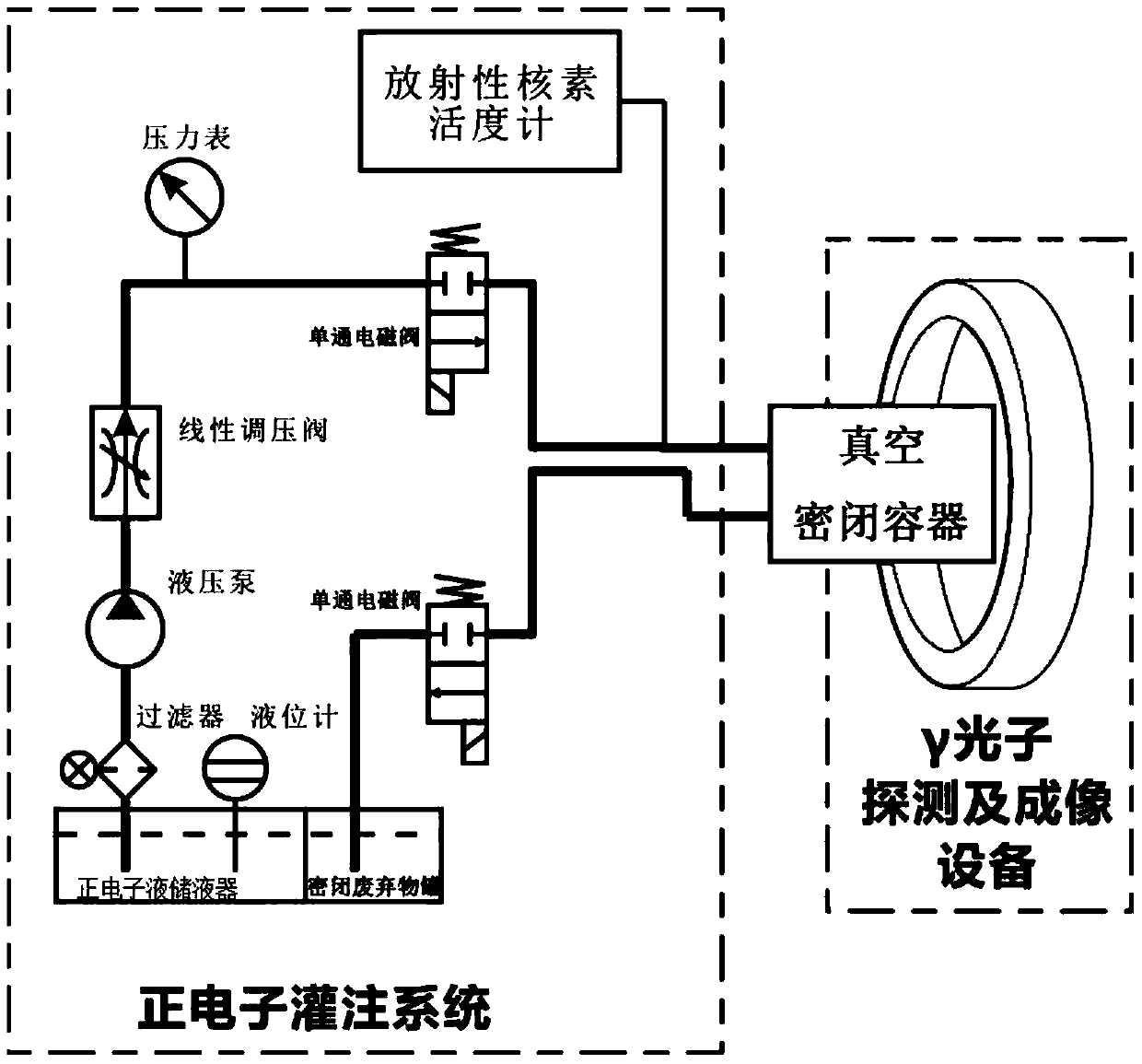Device and method for self-seeking positron liquid to locate inner cavity and surface defects of parts
A technology of positrons and parts, which is applied in the field of defect positioning devices for self-seeking positron liquids to accurately image the inner cavity and surface of parts in 3D, achieving the effects of low imaging efficiency, short test time and high detection accuracy
- Summary
- Abstract
- Description
- Claims
- Application Information
AI Technical Summary
Problems solved by technology
Method used
Image
Examples
Embodiment Construction
[0021] The present invention will be further explained below in conjunction with the accompanying drawings.
[0022] A device and method for self-seeking positron liquid to locate inner cavity and surface defects of a part, the device includes a rigid airtight container, a vacuum pump, a positron perfusion system, and gamma photon detection and imaging equipment. The positron perfusion system includes radionuclide activity meters, pipelines, positron liquid reservoirs, and closed waste tanks. Inside the rigid airtight container is a liftable support frame for placing the parts to be tested. The top of the rigid airtight container is provided with a positron liquid injection port and a vacuum port, and the bottom of the rigid airtight container is provided with a positron liquid discharge port.
[0023] Such as figure 1 As shown, the positron liquid reservoir is provided with a liquid level gauge, and the liquid outlet of the positron liquid reservoir is connected to the main ...
PUM
 Login to View More
Login to View More Abstract
Description
Claims
Application Information
 Login to View More
Login to View More - R&D
- Intellectual Property
- Life Sciences
- Materials
- Tech Scout
- Unparalleled Data Quality
- Higher Quality Content
- 60% Fewer Hallucinations
Browse by: Latest US Patents, China's latest patents, Technical Efficacy Thesaurus, Application Domain, Technology Topic, Popular Technical Reports.
© 2025 PatSnap. All rights reserved.Legal|Privacy policy|Modern Slavery Act Transparency Statement|Sitemap|About US| Contact US: help@patsnap.com



